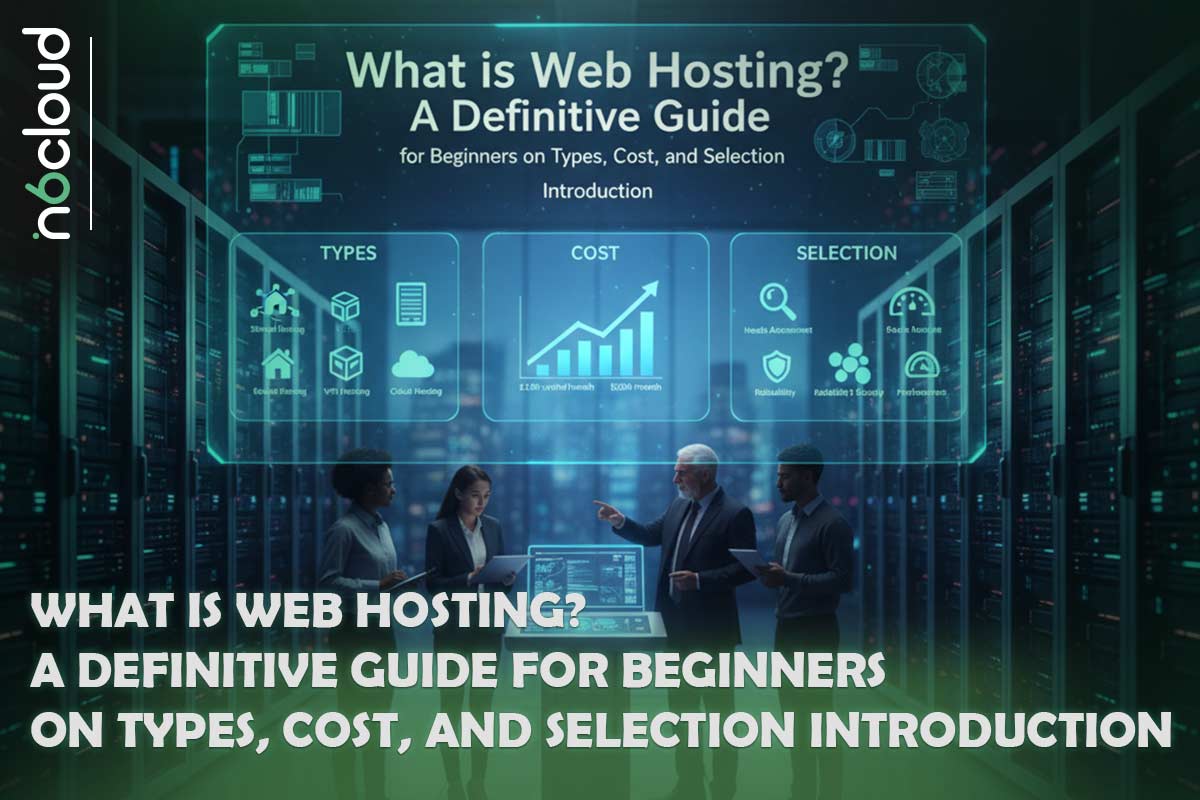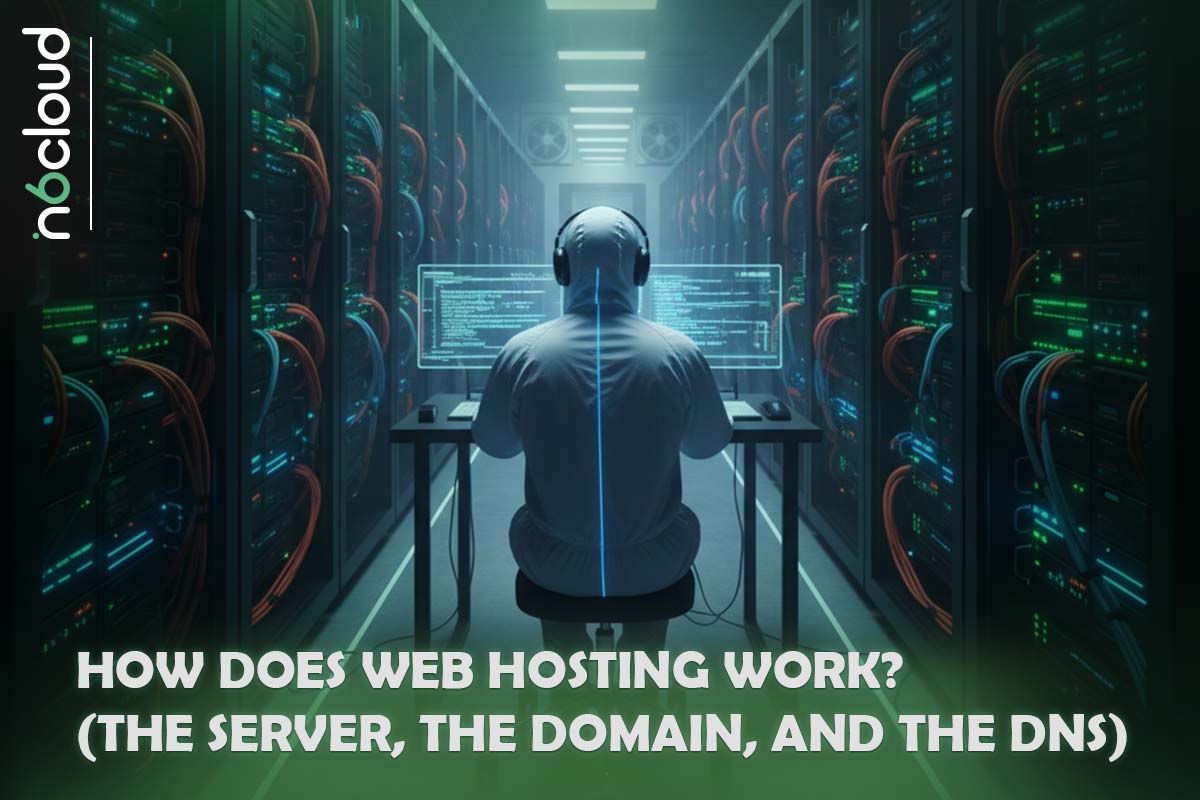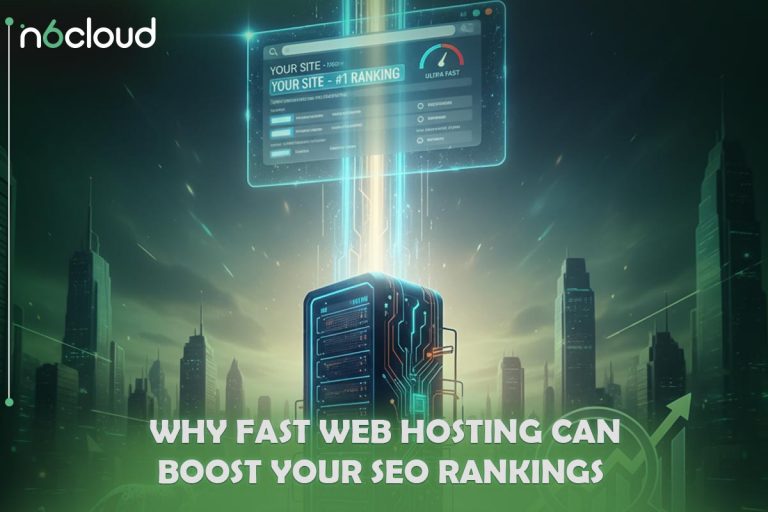Introduction – Understanding the Basics of Web Hosting
Every website you visit lives on a server somewhere in the world. That server’s job is to store the site’s files, process requests, and deliver pages to users’ browsers. The service that makes this possible is called web hosting.
In simple terms, a web hosting service provides the space, resources, and connectivity your website needs to be accessible on the internet. When you purchase a hosting plan, you are essentially renting part of a server (or, in some cases, an entire one) from a provider that manages the hardware, networking, and maintenance.
To make a website reachable, two main components work together:
- The Domain Name: your website’s address, such as example.com.
- The Hosting Server: the physical or virtual machine that stores your website’s data and serves it to visitors.
When someone enters your domain name, a system called the Domain Name System (DNS) translates it into the server’s IP address and directs the user’s browser to the right location. This process happens in milliseconds, allowing users to load your site seamlessly.
Today’s hosting environment ranges from simple Shared Hosting, where many websites share a single server, to advanced solutions such as VPS Hosting, Dedicated Hosting, or Cloud Hosting, each designed for different levels of control, performance, and scalability. Understanding how hosting works and which type suits your goals is the first step toward building a fast, reliable, and secure online presence.
How Does Web Hosting Work? (The Server, the Domain, and the DNS)
To understand how a website goes live on the internet, it helps to know what happens behind the scenes when someone types your website’s address into their browser. Three main components make it all work together: the server, the domain, and the DNS.
The Server
A server is a specialized computer that stores your website’s files, databases, and scripts. It runs continuously, responding to user requests to view your site. When someone visits your website, their browser connects to the server, retrieves the necessary files, and displays them as a web page.
Servers are built for performance and reliability, often located in data centers with redundant power, cooling, and high-speed internet connections. Hosting companies maintain these servers, ensuring they stay online 24/7.
The Domain
The domain name is the readable address that people use to reach your site, such as example.com. Every domain is linked to a specific server through an IP address (a series of numbers). Without a domain, users would have to remember that numerical IP instead, which is neither practical nor memorable.
When you register a domain, you essentially claim a unique name that points to your hosting server. You can manage this link through your registrar’s DNS panel or by hosting your own DNS service within your VPS or dedicated server.
The DNS
The Domain Name System (DNS) acts as the Internet’s address book. When a user enters your domain name, DNS resolves it to an IP address and routes the request to the correct server. This process is called DNS resolution.
If your hosting plan includes email, DNS handles mail routing via MX records, while other DNS records (such as A, CNAME, and TXT) define additional technical details about your domain.
In short, web hosting brings all these elements together. The server holds your site’s data, the domain gives it a name, and DNS ensures visitors reach it instantly. When appropriately configured, this system keeps your website online, secure, and accessible from anywhere in the world.
Exploring the Main Types of Web Hosting Services
Not all websites have the same needs. A small personal blog and an e-commerce store handling thousands of daily visitors require very different server resources. That’s why there are several types of web hosting services, each designed to fit a specific use case, performance requirement, and budget.
Below are the most common types of hosting options available today and how they differ.
Shared Hosting
Shared Hosting is the most affordable and beginner-friendly hosting type. Multiple websites are stored on a single server, sharing its CPU, memory, and bandwidth. This setup keeps costs low and simplifies management, making it ideal for small websites, blogs, and startups.
Most shared hosting plans include a control panel such as cPanel, email accounts, and one-click installers for platforms like WordPress. However, since resources are shared, performance can fluctuate when other sites on the same server experience high traffic.
VPS Hosting
Virtual Private Server (VPS) Hosting provides a middle ground between shared and dedicated solutions. Through virtualization, a single physical server is partitioned into multiple isolated virtual machines. Each VPS has its own operating system, resources, and root access, giving users greater control and security.
VPS hosting is best suited for developers, small businesses, or anyone running applications that need more power and flexibility than shared hosting provides. It allows users to install custom software, adjust configurations, and scale resources as their needs grow.
Dedicated Hosting
With Dedicated Hosting, you lease an entire physical server for your website or application. No other user shares the hardware, meaning you get full access to all system resources. This setup delivers maximum performance, security, and control.
Dedicated servers are ideal for large organizations, high-traffic websites, or projects that require custom configurations, compliance controls, or advanced security policies. The trade-off is a higher cost and the need for more technical expertise to manage the server effectively.
Cloud Hosting
Cloud Hosting uses a network of interconnected servers instead of a single physical machine. Your website runs on a cluster that automatically balances the load and ensures high availability. If one server goes offline, another instantly takes over.
This distributed structure provides excellent scalability and uptime, making cloud hosting perfect for growing businesses, SaaS applications, and modern web platforms. Users pay only for the resources they use, making it both cost-efficient and reliable.
Managed Hosting
Managed Hosting takes the technical burden off your shoulders. The hosting provider handles maintenance tasks like software updates, backups, and security monitoring, allowing you to focus on your website rather than server administration.
This type of hosting can apply to various environments, such as managed WordPress hosting or managed VPS hosting. It’s an excellent choice for business owners or developers who prefer convenience and expert support without sacrificing performance.
Each hosting type serves a different purpose, from low-cost entry-level plans to robust dedicated or cloud-based systems. The right choice depends on your project size, traffic expectations, budget, and technical experience.
Key Factors for Choosing the Best Web Hosting Service
Selecting the right web hosting service can make the difference between a smooth-running website and one that struggles with slow speeds or downtime. Whether you are launching your first blog or managing a growing online business, understanding the key hosting factors helps you make a wise, lasting choice.
Performance and Speed
Website loading time is one of the most critical factors for user experience and SEO. Choose a host that uses modern hardware, such as NVMe or SSD drives, and optimized web servers like LiteSpeed or Nginx, along with content delivery networks (CDNs) to serve data faster. Even a one-second delay can cause visitors to leave your site.
Reliability and Uptime
A reliable hosting provider guarantees maximum uptime, usually 99.9% or higher. Frequent downtime can hurt your reputation and affect sales or rankings. Look for providers that monitor servers 24/7 and use redundant systems to ensure your website remains accessible.
Security
Cybersecurity is a top priority for any website. A good hosting plan should include essential protections such as firewalls, malware scanning, DDoS prevention, and free SSL certificates. If you handle sensitive data or payments, consider upgrading to VPS hosting or Dedicated hosting, where you can configure additional security layers.
Scalability
As your website grows, your hosting needs may change. Cloud hosting and VPS hosting offer flexible upgrade options that let you increase CPU, memory, or storage without migration downtime. Scalability ensures that your site can handle growth without interruptions.
Technical Support
Even with the best setup, technical issues can happen. Choose a hosting provider known for responsive customer support available via live chat, email, or phone. Providers offering managed services often include hands-on assistance with updates, performance tuning, and troubleshooting.
Cost and Transparency
The price of hosting can vary widely depending on the type of plan and included features. Shared hosting is the most affordable, while dedicated servers and managed hosting tend to cost more. Pay attention to renewal rates, backup fees, and add-ons that could increase long-term costs. A trustworthy host should clearly list all pricing details, helping you budget without hidden surprises.
Free vs. Paid Web Hosting: Is the Investment Worth It?
When starting a website, one of the first decisions many people face is whether to use free web hosting or invest in a paid plan. At first glance, free hosting can seem attractive. However, it often comes with limitations that make it unsuitable for most professional or long-term projects.
Free hosting services typically place your website on shared infrastructure with restricted resources. They may show ads, limit storage space, and offer little to no customer support. In many cases, you cannot use your own domain name and must rely on a subdomain such as yourname.freehost.com.
These platforms can be helpful for small personal pages or testing environments, but they lack the reliability and performance needed for business or professional sites. Limited bandwidth and slower response times can also affect search rankings and user experience.
Paid web hosting services offer more stability, flexibility, and control. Even an entry-level shared hosting plan provides dedicated storage space, a custom domain, and access to essential tools such as cPanel, email accounts, and automated backups.
Upgrading to VPS, cloud, or dedicated hosting unlocks even greater performance, enabling you to run complex applications, handle high traffic, or manage advanced configurations. Paid plans also include stronger security, faster hardware, and technical support to help you resolve issues quickly.
The best choice depends on your goals. For a personal blog or small portfolio, a low-cost shared hosting plan might be sufficient. However, if you’re launching an e-commerce site or a web application that needs greater power and reliability, consider upgrading to a high-performance shared hosting plan, a VPS, or a dedicated server. These options provide better speed, uptime, and control, which are essential for business and transactional websites.
How Much Does Web Hosting Typically Cost?
The cost of web hosting depends on several factors, including the plan type, performance level, management options, and included features. Prices can range from just a few dollars per month to several hundred, depending on your website’s requirements.
For beginners, shared hosting is usually the most affordable option, with plans starting from around $2.95 to $10 per month. It’s suitable for small websites, blogs, and portfolios that don’t need advanced resources. However, because multiple users share the same server, performance may fluctuate during busy times.
VPS hosting, or Virtual Private Server hosting, typically costs $7 per month or more. It offers better performance and security since each VPS operates in its own isolated environment. This type of hosting is ideal for small businesses, developers, or growing websites that have outgrown shared plans but don’t yet need a dedicated server.
For maximum control and reliability, dedicated hosting provides a dedicated physical server for your website. Prices generally range from $100 to more than $300 per month, depending on the hardware and support level. It’s best suited for high-traffic e-commerce sites, enterprise-level applications, or any project that requires guaranteed performance and customization.
Cloud hosting provides a flexible alternative by distributing your website across multiple virtual servers. Prices usually start at around $10 per month, and you pay only for the resources you use. This model offers excellent scalability for businesses with varying traffic levels or seasonal demands.
If you prefer not to manage technical tasks yourself, managed hosting is another option. It includes server monitoring, updates, and maintenance handled by the hosting provider. Managed plans can apply to VPS, cloud, or dedicated environments and usually start around $20 per month, increasing based on the level of service and automation provided.
Besides the hosting plan itself, keep in mind there are additional costs, such as domain registration ($10–$20 per year), SSL certificates (often free but sometimes premium), and optional add-ons like backups or business email hosting.
Conclusion – Choosing the Right Web Hosting for Your Website
Understanding web hosting is one of the first and most important steps in building a successful online presence. From simple shared hosting to scalable cloud environments, each type of hosting offers a different balance of cost, performance, and control.
The right web hosting service depends on your goals, technical experience, and the scale of your website. Beginners often start with shared hosting for its simplicity and affordability, while growing projects may benefit from VPS hosting or cloud hosting for greater speed and flexibility. Large-scale or business-critical websites often rely on dedicated hosting for maximum control and stability.
No matter which option you choose, focus on reliability, customer support, and room for growth. A well-chosen hosting plan not only keeps your website online but also ensures it performs efficiently, remains secure, and can adapt as your needs evolve.
In the end, web hosting isn’t just about storing files. It’s about creating a dependable foundation for your digital success.
Frequently Asked Questions
Yes. Every website needs a hosting service to store its files and make them accessible online. Without web hosting, your site’s data would have nowhere to live, meaning users couldn’t access it through a browser. You can choose from different types of hosting, such as shared hosting, VPS hosting, or cloud hosting, depending on your site’s needs and budget.
A domain name is your website’s address (for example, example.com), while web hosting is the service that stores and serves your website’s content. Think of it like this: the domain is your home’s address, and the hosting is the house where all your files and data are kept. Both are required for your site to function.
Prices vary based on the hosting type and resources. Shared hosting plans start around $3–$10 per month, while VPS hosting costs roughly $7–$40 per month. Dedicated hosting is more expensive, ranging from $100 to $300 per month. Cloud hosting offers flexible pricing based on actual resource usage, which makes it ideal for scalable projects.
For most beginners, shared hosting is the easiest and most cost-effective way to start. It comes with simple setup tools and doesn’t require technical knowledge. As your website grows, you can easily upgrade to VPS hosting or cloud hosting for better performance and more control.
If your site starts receiving more traffic or needs additional resources, you can upgrade to a higher plan. Many providers make this transition seamless, allowing you to move from shared hosting to VPS hosting, or even to dedicated hosting, without downtime. The goal is to ensure your website stays fast and responsive as it expands.








